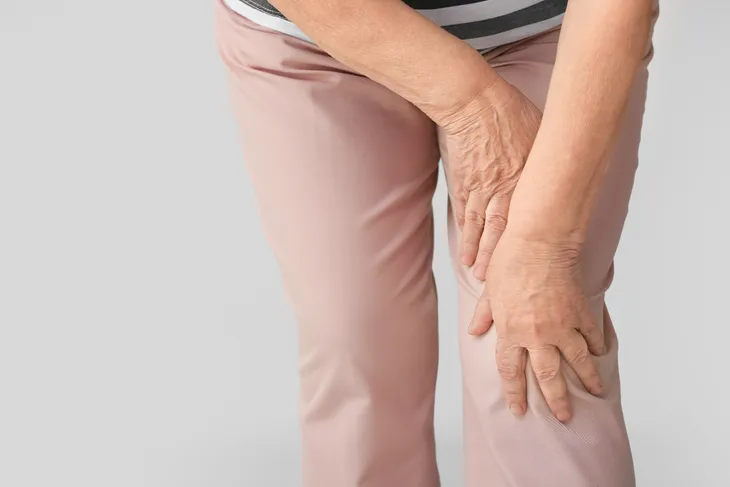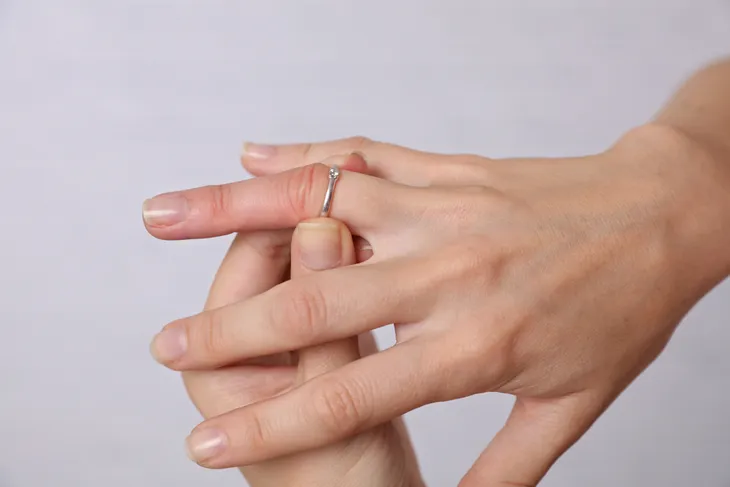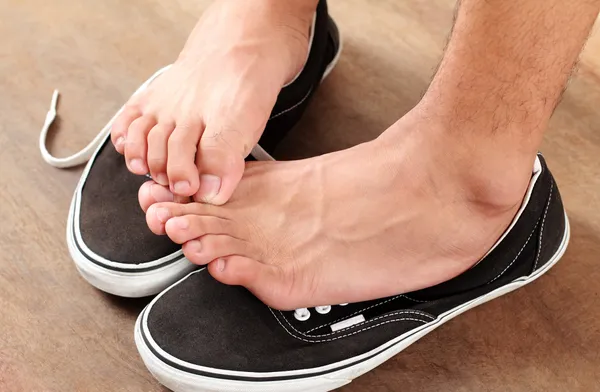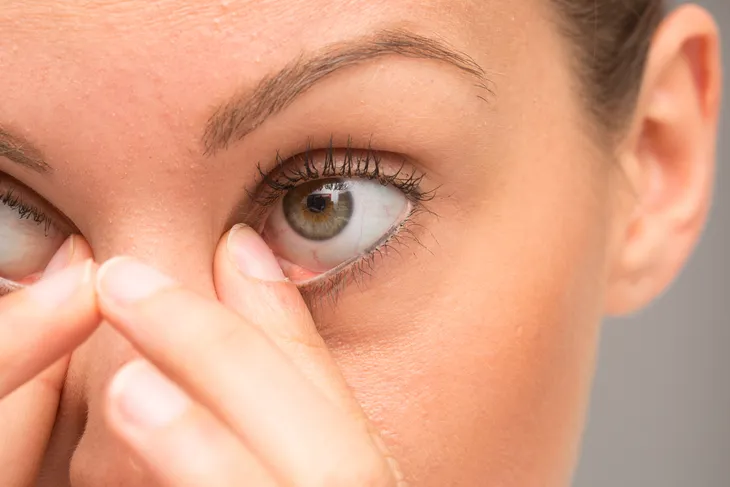Psoriatic arthritis is a form of arthritis that attacks the tissue in the skin and joints. It’s more common in people who already have psoriasis, a condition that causes red, scaly patches of skin on various areas of the body. In fact, most people with psoriasis are later diagnosed with psoriatic arthritis, but joint problems can occur before any signs of this skin condition.
The main symptoms associated with psoriatic arthritis are joint pain, stiffness, and swelling, but it can affect any part of the body, including the fingers and spine, says the Mayo Clinic. The symptoms can range from mild to severe, with periods of flare-ups, as well as periods of remission. While there’s no cure for psoriatic arthritis, it’s important to be aware of the symptoms in order to obtain treatment to help manage them because the disease is progressive in nature. The seven most common symptoms of psoriatic arthritis are…
Joint and Tendon Problems
People with psoriatic arthritis commonly experience pain and stiffness in their joints, typically in the ankles, knees, fingers, toes, and lower back. According to Health, the joints are typically “red and warm to the touch” and are especially stiff first thing in the morning.
Individuals may also feel pain in certain tendons or ligaments, particularly where they attach to the bones. This is called enthesitis, which the Arthritis Foundation says most commonly occurs “at the heel (Achilles tendinitis) or the bottom of the foot (plantar fasciitis), but it can also occur in the elbow (tennis elbow).”
Swollen Fingers or Toes
Swollen fingers or toes, known medically as dactylitis, are another common symptom of psoriatic arthritis. This sausage-like swelling, which affects approximately 40-percent of people with the condition, occurs along the entire length of the finger or toe and is caused by inflammation of the tendons.
This helps to distinguish it from other forms of arthritis, where swelling is often confined to the area surrounding a single joint. According to Health, this symptom may appear even before the person experiences any joint issues.
Nail Changes
Psoriatic arthritis also tends to cause changes to a person’s nails, both on the hands and feet. Most commonly, the individual will see discoloration and pitting, which are small dents or depressions in the nail.
In some cases, the nails may also appear to be infected or separate from the nail bed entirely. These symptoms tend to help physicians diagnose the condition, as the Arthritis Foundation says they “are unique to psoriasis and psoriatic arthritis.”
Fatigue
According to Everyday Health, “Up to 57-percent of people with an inflammatory rheumatic disease like psoriatic arthritis experience severe fatigue,” which can occur as a result of the inflammation caused by the disease, as well as the emotional distress of dealing with the condition.
Health Union says this fatigue may present itself as “extreme tiredness, difficulty keeping eyes open, or flu-like symptoms.” Along with fatigue, the source says, “Patients also reported symptoms such as lack of motivation and loss of appetite.”
Eye Problems
A person with psoriatic arthritis may also experience eye problems as a result of the condition, such as inflammation in the iris, which WebMD says “can cause pain that gets worse in bright light.”
The Arthritis Foundation adds that this inflammation can cause “redness, irritation and disturbed vision (uveitis) or redness and pain in tissues surrounding the eyes (conjunctivitis, or “pink eye”).”
Lower Back Pain
According to the Mayo Clinic, some people with psoriatic arthritis develop a condition called spondylitis, which “causes inflammation of the joints between the vertebrae of your spine and in the joints between your spine and pelvis (sacroiliitis).”
This inflammation can cause pain and stiffness in the lower back, as well as other areas of the body, such as the buttocks, neck, and upper back. Although rare, Health says, “In about 5-percent of people, spinal symptoms are the only manifestation of psoriatic arthritis.”
Chest Pain or Shortness of Breath
In rare cases, people with psoriatic arthritis may experience chest pain or shortness of breath. WebMD says, “These might happen when the chest wall and the cartilage that links your ribs to your breastbone get inflamed.”
As Everyday Health indicates that people with psoriatic arthritis have a “58-percent greater risk for a serious cardiovascular problem, such as a heart attack,” it is important to report these symptoms to a physician right away.
Psoriatic Arthritis Treatment
If you’re showing any signs of psoriatic arthritis, it’s important that you book an appointment with your doctor for a diagnosis. From there, your doctor will work with you to create a treatment plan.
The goal of treatment is to help ease your painful symptoms and some treatments may also help protect your joints. Treatment will vary depending on the severity of your condition but some common psoriatic arthritis treatment options are medications, light therapy, and lifestyle changes. In some cases, surgery may be necessary. Let’s take a closer look at some of these treatment options next.
Treatment: Light Therapy
One way to help treat psoriasis skin plaques is using ultraviolet (UV) light. WebMD warns it’s important that you only use this form of therapy with the guidance of your doctor, as UV light can damage the skin.
There are a few different types of light therapy that are used for psoriasis. First, narrowband UVB phototherapy is typically used if the disease is widespread. It exposes your entire body to light for a few seconds to minutes. It’s common for individuals to get this treatment up to three times per week for 3-months.
Another type of light therapy is excimer laser, which “uses narrowband UVB to treat smaller areas, like psoriasis on your scalp,” says the source. Individuals typically require 20 to 25 treatments over the course of 2 to 3-weeks.
Finally, your doctor may recommend PUVA which combines UVA rays with a pill that makes your skin more sensitive to light. Individuals typically require 20 to 25 treatments over the course of 2 to 3-weeks.
 novak.elcic / Shutterstock
novak.elcic / ShutterstockTreatment: Surgery
WebMD says, “Most people with psoriatic arthritis will never need surgery.” Surgery is often used as a last resort if other treatment options don’t work.
One possible procedure is a synovectomy. The goal of this procedure is to remove the diseased lining of a joint. In some cases, if the joint is severely damaged by psoriatic arthritis, the joint may need to be replaced with an artificial joint that is made of metal and plastic. This procedure is called arthroplasty.
Lifestyle Changes: Diet
Your doctor will also likely recommend some lifestyle changes to help you manage your condition and improve your quality of life. For starters, they may recommend that you eat a healthy diet full of foods that may help ease inflammation. Some great options are fresh fruit and vegetables, coldwater fish, olive oil, walnuts, pumpkin seeds, and flaxseeds.
It’s also important to avoid foods that may cause inflammation. Some of these include processed foods, refined sugar, fatty red meat, and dairy products. Talk to your doctor to find out which foods you should be eating and avoiding.
Lifestyle Changes: Exercise and Maintain a Healthy Weight
While exercise may be the last thing on your mind when your joints are sore, it turns out that exercise can help keep your joints flexible and your muscles strong, says the Mayo Clinic. That said, it’s a good idea to try exercises that are easier on your joints such as walking, swimming, biking, tai chi, and yoga.
Your weight typically goes hand in hand with your other lifestyle choices, such as diet and exercise. But maintaining a healthy weight really is important for psoriatic arthritis sufferers. This is because a healthy weight will put less strain on your joints which in turn can reduce your pain and increase your energy. Talk to your doctor to find out what a healthy weight is for you.
Other Lifestyle Changes
Along with diet and exercise, it’s also important that you manage your stress as stress can make your condition worse. It’s also important to rest and pace yourself. Dealing with pain and inflammation can be exhausting and while you shouldn’t stop being active, it is important to find time throughout the day to relax.
Furthermore, if you smoke, it’s time to quit. Not only can smoking increase your risk of developing psoriatic arthritis but also it can make the symptoms worse if you’re already battling the disease. Finally, it’s important to limit your alcohol consumption, as it can “decrease the effectiveness of your treatment and increase side effects from some medications,” says the Mayo Clinic.
The Importance of Regular Checkups
The best way to treat psoriatic arthritis is to have regular checkups. It’s important for your doctor to keep an eye on how your disease is progressing.
Regular checkups allow your doctor to see how your current treatment plan is working and make adjustments if it’s not working. “They also can keep an eye on whether or not you’re getting a related condition (they’ll call it a comorbid condition) like type 2 diabetes, obesity, depression, and anxiety,” says WebMD.
















